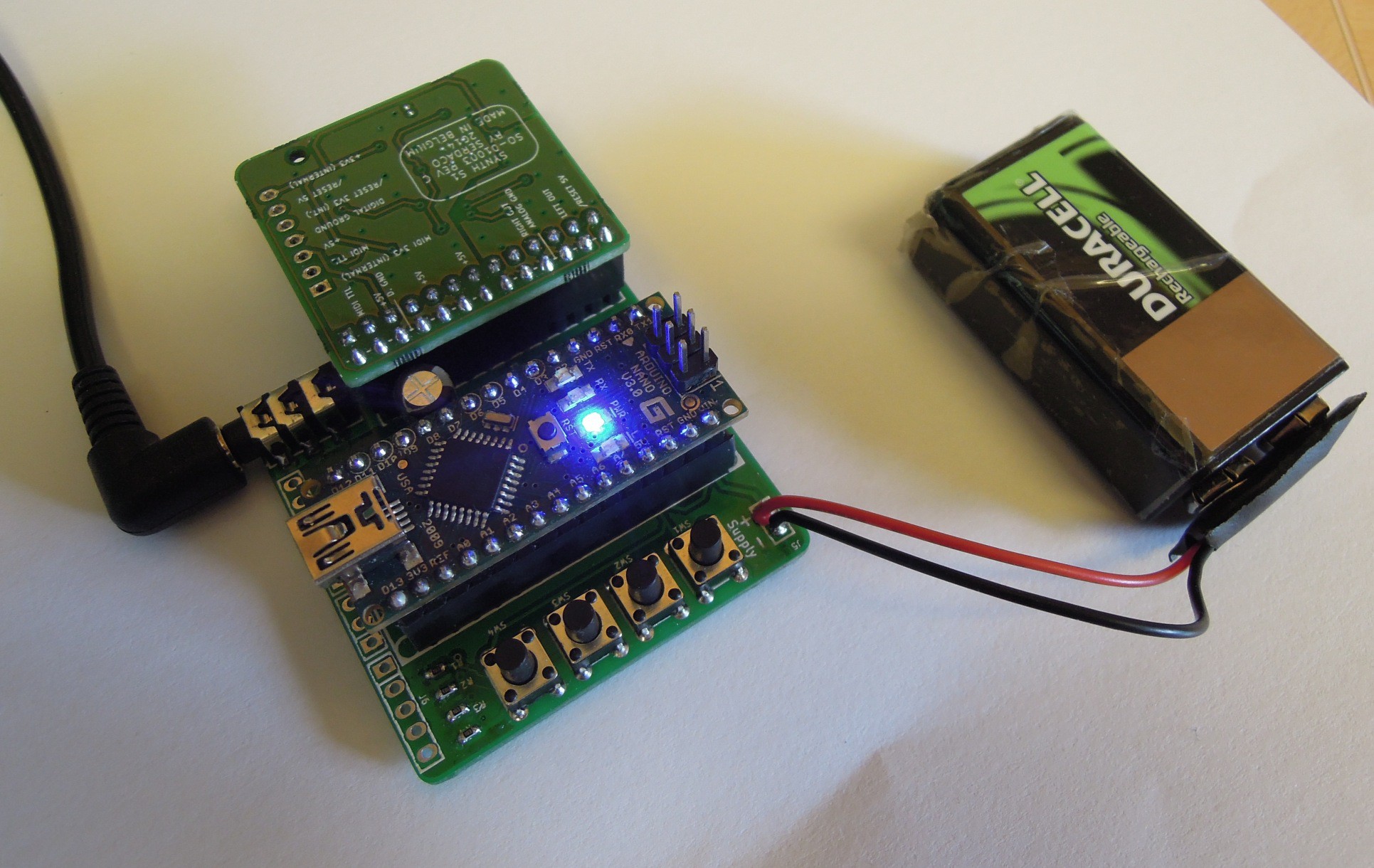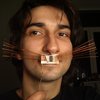My son likes riding his bicycle as fast as he can. He looks at his tiny cycle computer to see the max speed he reached. A few weeks ago, this low cost speedometer stopped working.
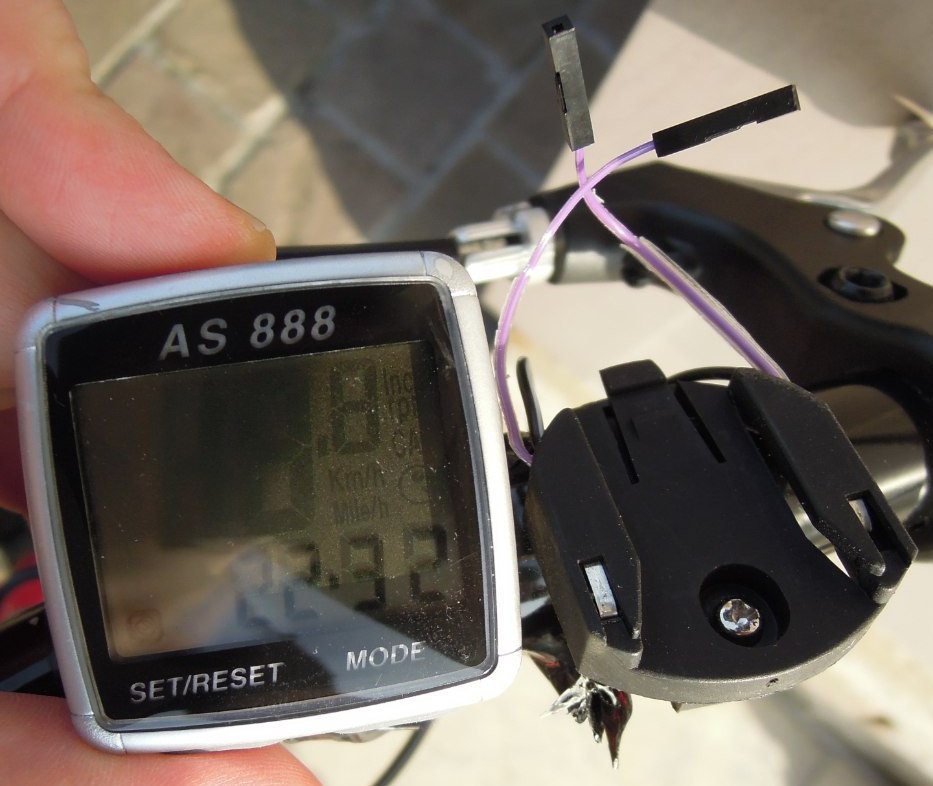
This speedometer uses a reed switch + magnet to detect the wheel speed.
I found that the problem was a bad contact between the holder and the cycle computer : the cycle computer slides on the holder and touches 2 contacts, connected to a reed switch.
While repairing, I thought I could do something more fun, and I soldered 2 wires with female headers to the cycle computer holder. This way the original cycle computer is still usable, but you can also add your own hardware. I had this tap tempo drum project laying around. I modified it for use on a bicycle.
How it works : the Arduino measures the period of the reed switch pulse, and adjusts the tempo of a drum sequence accordingly. This drum sequence is sent by TTL level MIDI commands to a Dreamblaster S1 module. The S1 is a low power waveblaster compatible module. It normally uses 5V but can be powered with 9V just as well, it uses very little current. You could use any other waveblaster module from the soundblaster 16/awe32 era. In that case you need to carefully address the power supply requirements, probably you need a clean 5 volt with sufficient current, and +/-12V. Don't blow up your retro gear.
If the cycle period grows longer than 5 seconds, the sequence is stopped. As soon as a new period is detected the sequence is started and/or the tempo is adjusted. The output of the S1 synth is connected to a low cost battery powered speaker.
The Arduino code can be found here, it is MIT licensed. For the schematic of the current breadboard setup, see this picture. The prototype worked ok, and now I am designing a PCB, with some improvements (for example proper reset circuit) and some expansions (see below, 'planned improvements').
Be careful when testing, keep an eye on the road. Any usage of this or similar projects is on your own risk.
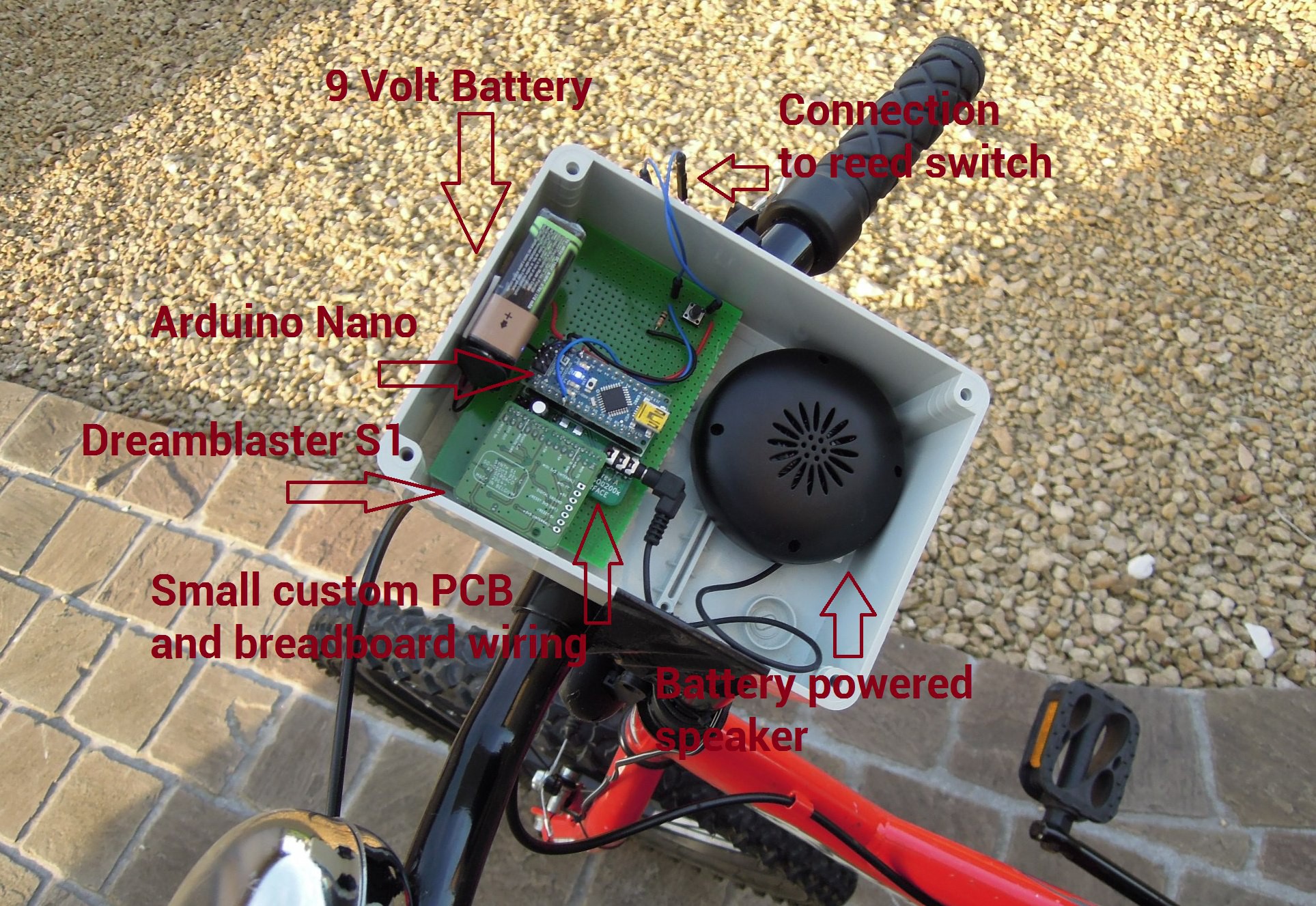
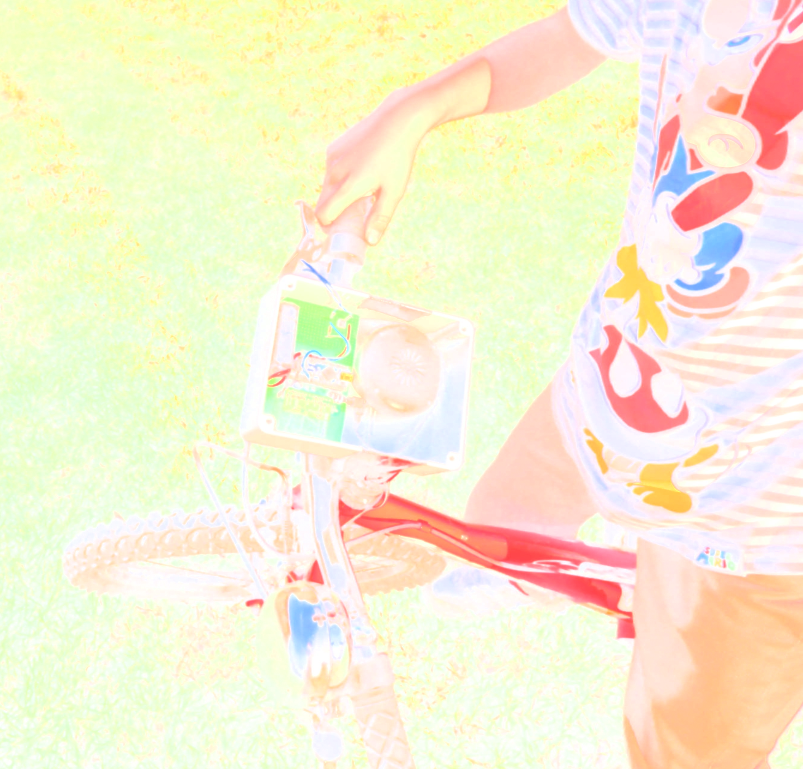
See this video for a small demo outdoor + a more clear demo indoor :
Planned improvements :
Find a louder portable speaker, the tiny battery powered speaker is a bit quiet. Not sure if the neighbours will appreciate the louder version though.
I'm designing a new PCB now, using the open source package KiCad. It is an Arduino Nano shield that can be used to create bicycle drummer, a tap tempo pedal, or other interactive synth/music spin off projects. I will add the Kicad files to the github repository, as soon as it is assembled and tested. This is how it looks in 3D KiCad rendering now :
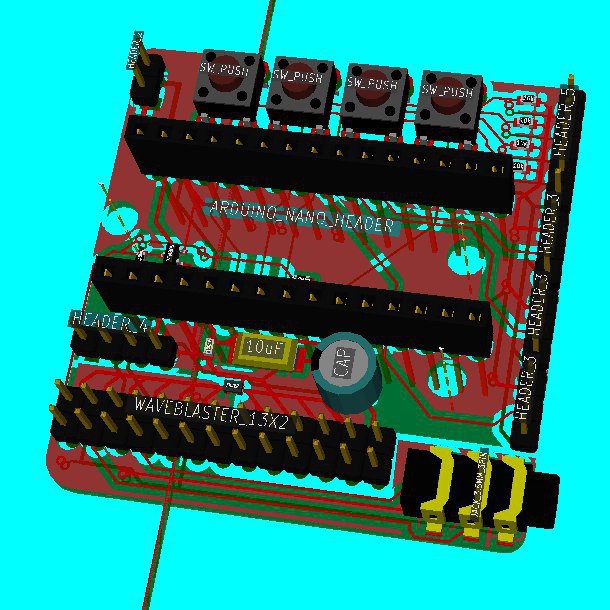
Also I plan to extend the software with different rhythm styles, maybe also additional bass lines. The new PCB has some buttons which you can use to select rhythms/tracks, or trigger some drum sounds manually.
 serdef
serdef